Disclaimer: This post may contain Amazon affiliate links. Sudachi earns a small percentage from qualifying purchases at no extra cost to you. See disclaimer for more info.
What is Yakimeshi (Japanese Fried Rice)?
In Japan, Yakimeshi (焼き飯) can simply be translated to “pan-fried rice”. It can be enjoyed at ramen, teppanyaki, and Chinese restaurants, as well as at home.
Essentially, yakimeshi is a variation of fried rice, similar to other Asian countries. The word “yaki” means “fried” just like Yaki udon and Yakisoba, and “meshi” means “rice” in Japanese. You might also know that fried rice is commonly called “Chahan” in Japan, but this term is more commonly used in Eastern Japan, while “Yakimeshi” is more commonly used in Western Japan.
Some people say that Yakimeshi is more like home-style fried rice with ingredients like cabbage, fish sausage, and chikuwa, while Chahan is the fried rice served in Chinese restaurants.
However, there’s no concrete answer to distinguish between the two. It’s important to understand that both Yakimeshi and Chahan mean fried rice, and there’s no right or wrong way to make it.
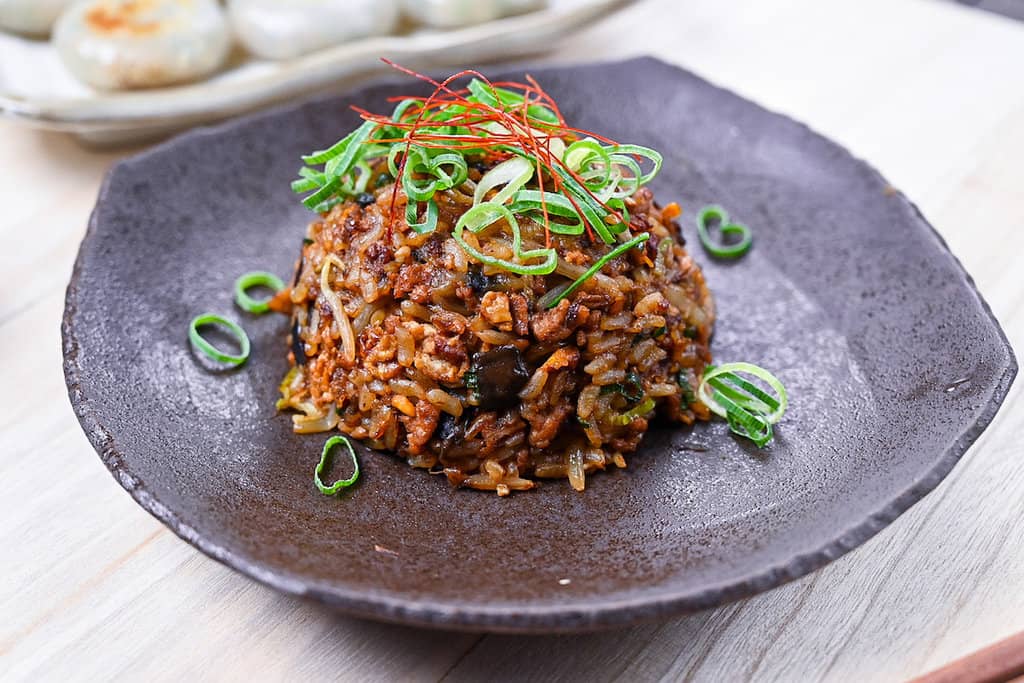
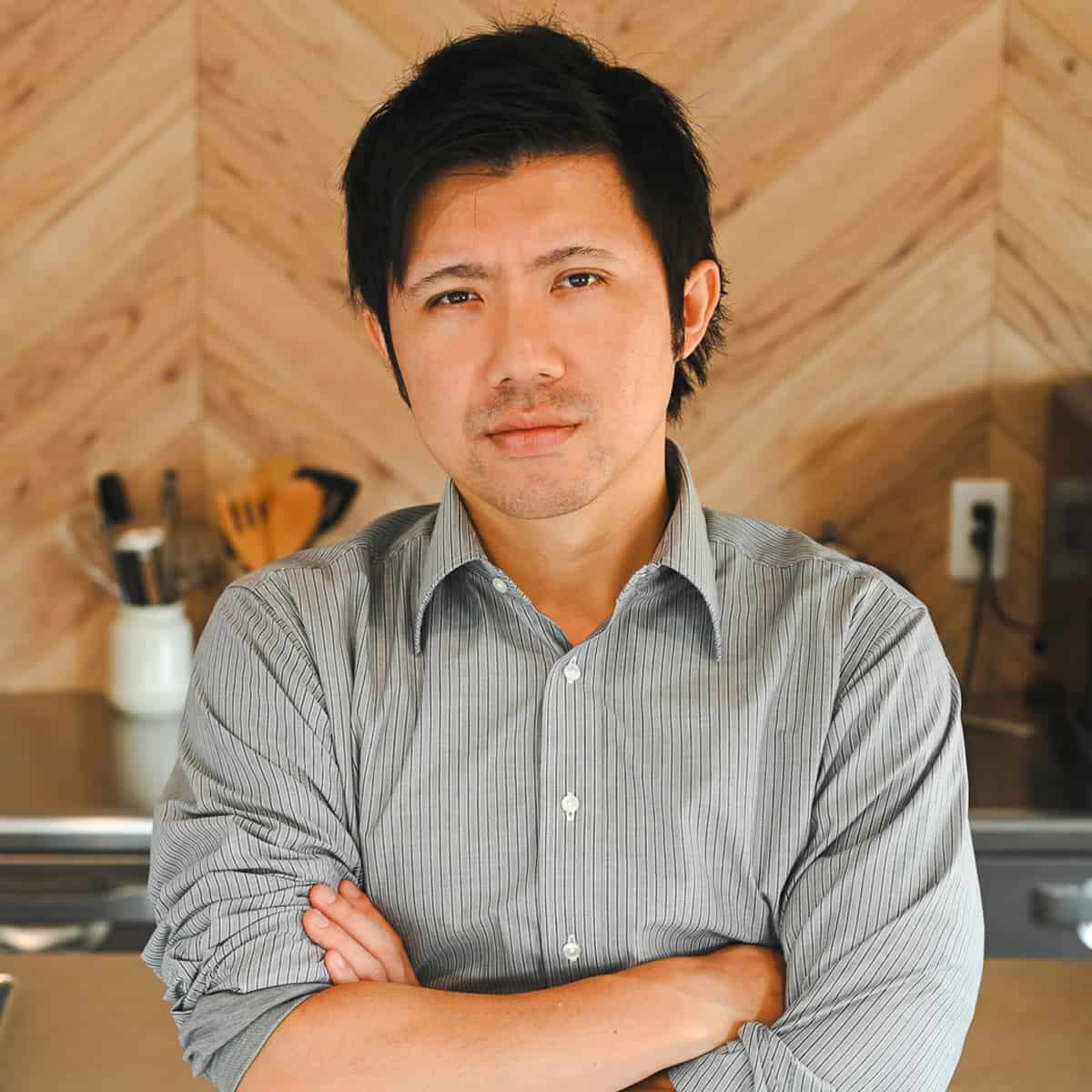
How I Developed This Recipe
Since I had already made a ramen restaurant-style chahan recipe, I wanted to add a different twist to this yakimeshi recipe.
So, for this yakimeshi recipe, I decided to mix pork belly and ground pork to create a unique texture. I also added red miso to create a darker color and enhance the visual appeal.
This recipe has a distinct taste from traditional yakimeshi, give it a try!
Ingredients & Substitution Ideas
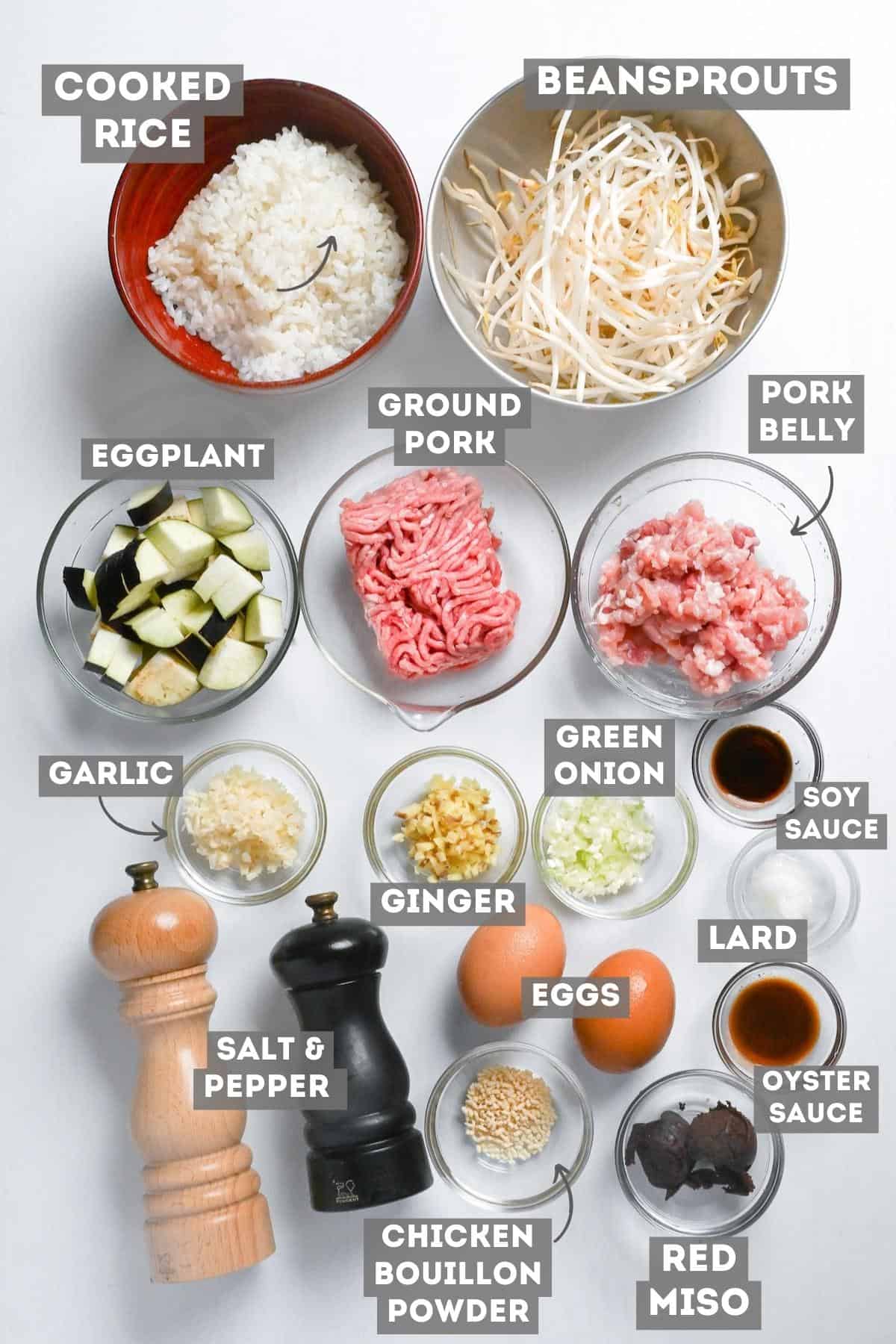
- Lard: I prefer lard for a robust flavor, but other cooking oils can also be used.
- Potherbs: I used a fine mix of green onions, ginger, and garlic.
- Ground Pork: Although yakimeshi can be made with other ground meats, pork remains my top choice.
- Pork Belly: Coarsely chopped to create a different texture from ground pork.
- Eggplant: A highly recommended vegetable, it excels in absorbing the fat from the meat and seasonings.
- Beansprouts: Add these towards the end to introduce a nice crunch to the dish.
- Red Miso Paste: I used red miso for flavor and visual appeal, but other miso pastes can be used as substitutes.
- Soy Sauce: I recommend Kikkoman soy sauce as an affordable option. For more insights on soy sauce selection, consult my comprehensive soy sauce guide.
- Oyster sauce: This ingredient enhances the dish’s depth of flavor.
- Chinese-style Chicken Bouillon Powder: An important condiment for this recipe. I always use Youki’s additive-free Garasupu.
- Medium Eggs: I used medium-sized eggs, but both S and L-sized eggs are fine too.
- Cooked Japanese Short-Grain Rice: Short-grain Japanese rice is ideal for yakimeshi. For those in the U.S., recommendations on the best Japanese rice and cooking methods can be found in the “How to Cook Japanese Rice” guide.
- Toppings: All optional, but I garnish my yakimeshi with finely chopped green onions, chili oil, and chili threads.
Curious about the exact brands and products that bring my recipes to life? Discover the brands and ingredients behind my recipes at the Sudachi Amazon Storefront. Explore my handpicked pantry essentials and find your next kitchen favorites!
Jump to Full Recipe Measurements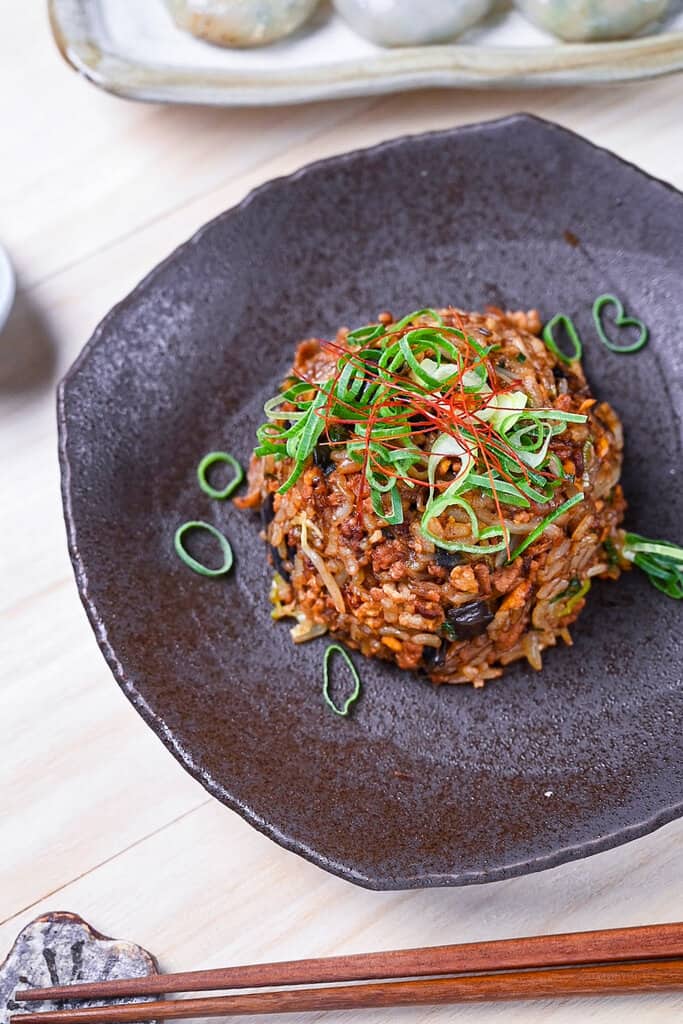
Visual Walkthrough & Tips
Here are my step-by-step instructions for how to make Miso Flavored Yakimeshi at home. For ingredient quantities and simplified instructions, scroll down for the Printable Recipe Card below.
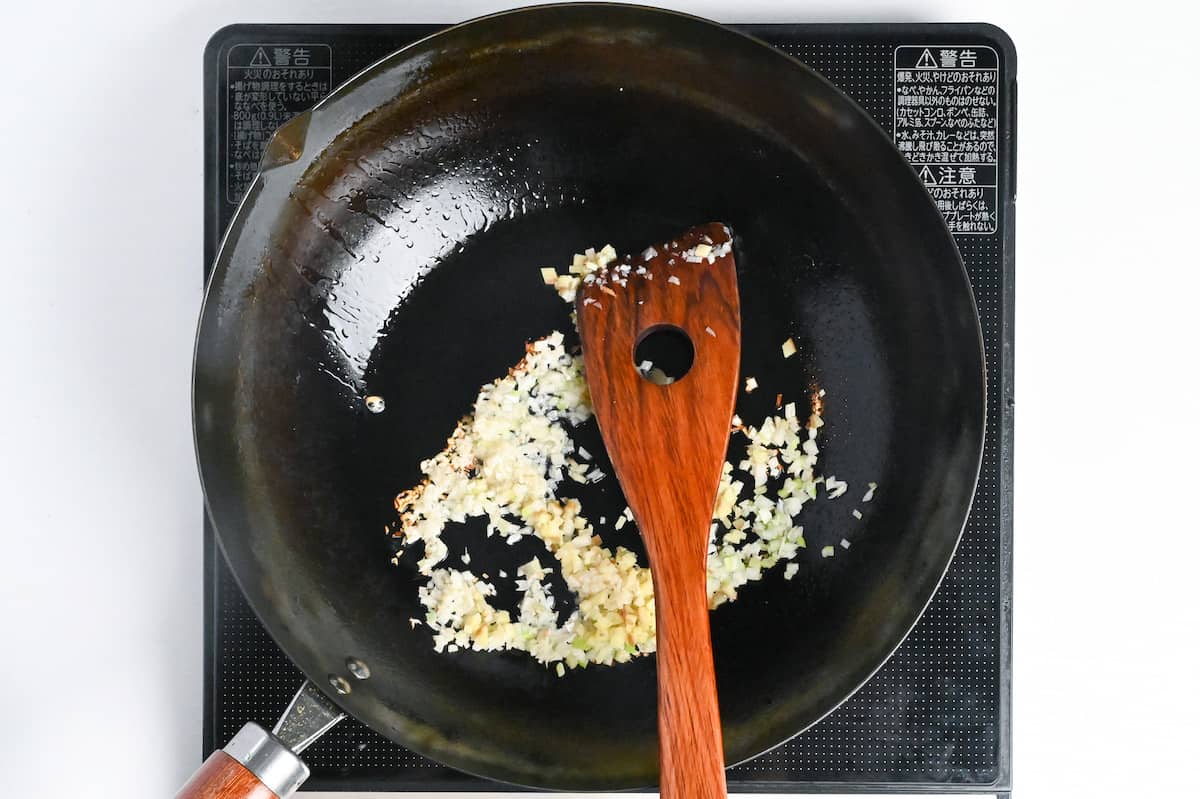
Heat a wok on medium-high and add the lard or your choice of cooking fat. Once melted, add finely chopped green onions (white part), fresh ginger, and garlic. Stir fry until fragrant, and be careful not to let it brown too much, as this will add a bitter flavor to the dish.
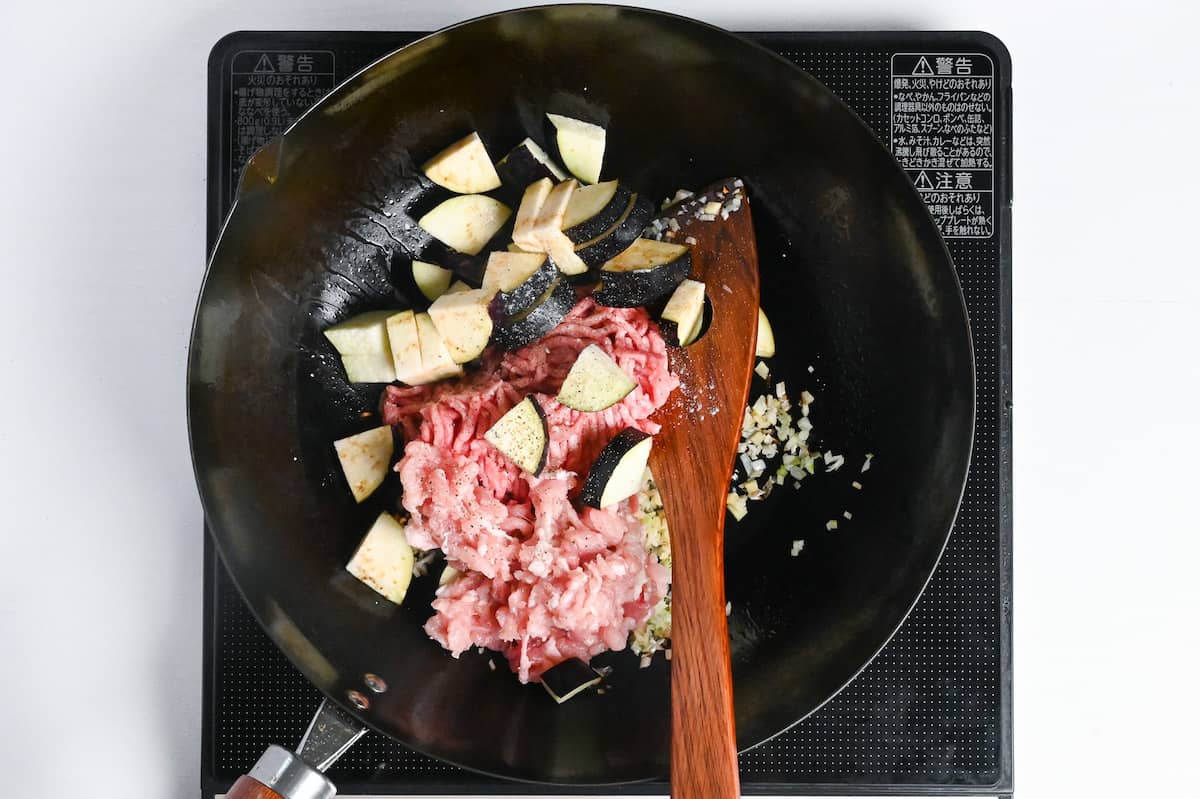
Add the ground pork, finely diced pork belly, and roughly chopped eggplant, and stir-fry everything together until the meat is sealed.
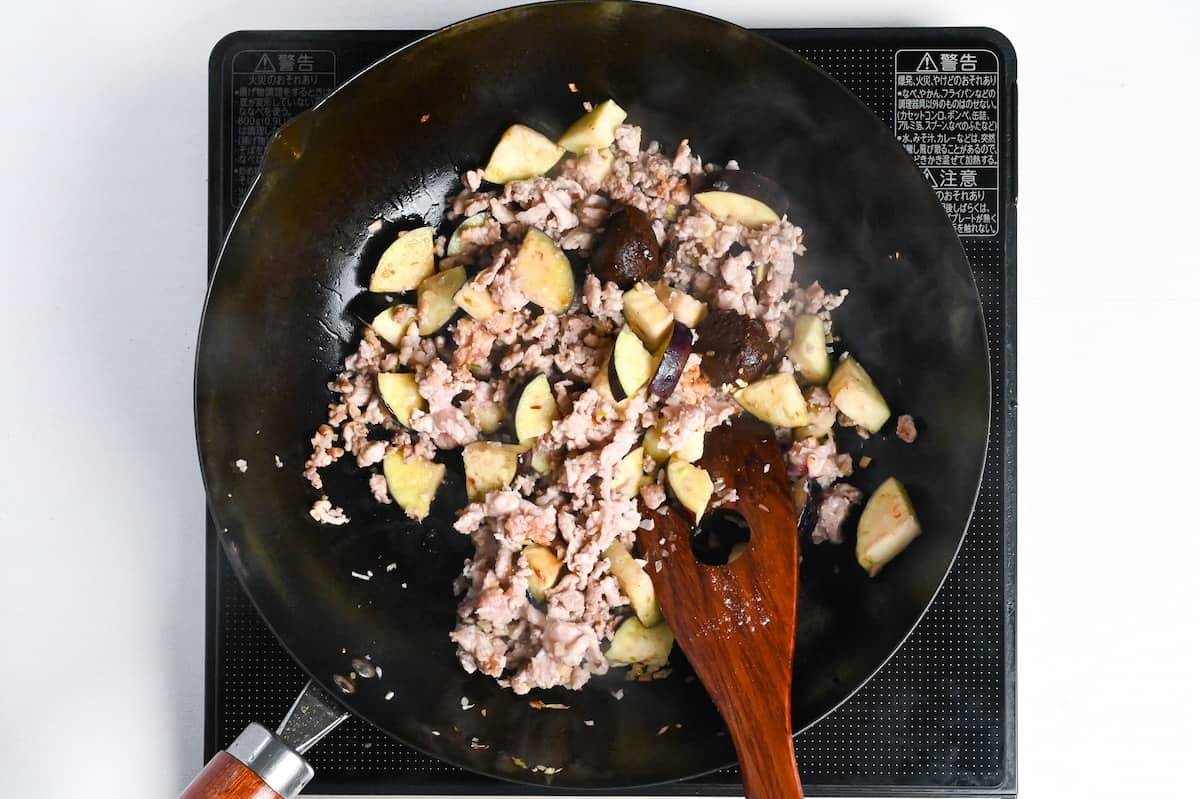
Once sealed, add the miso paste, soy sauce, oyster sauce, and chicken bouillon powder. Mix thoroughly until the condiments are evenly distributed.
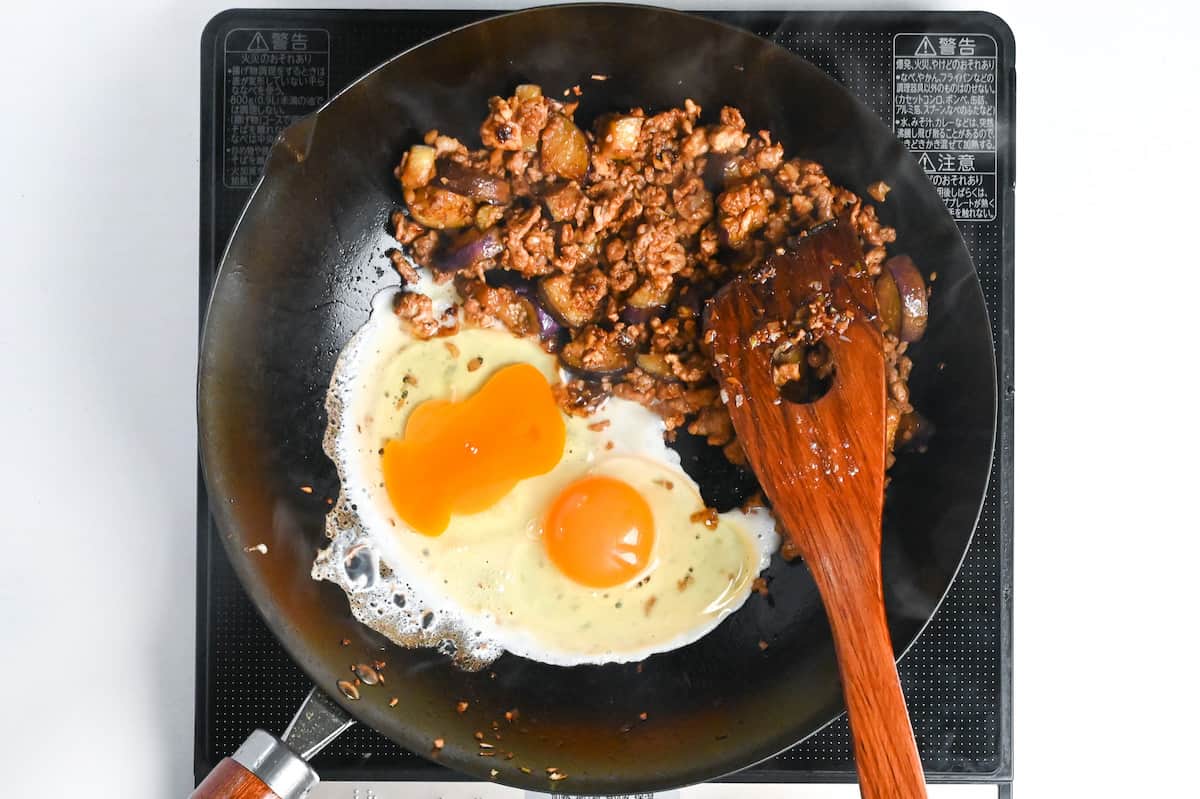
Push the seasoned meat and vegetables to one side and crack two eggs into the empty space.
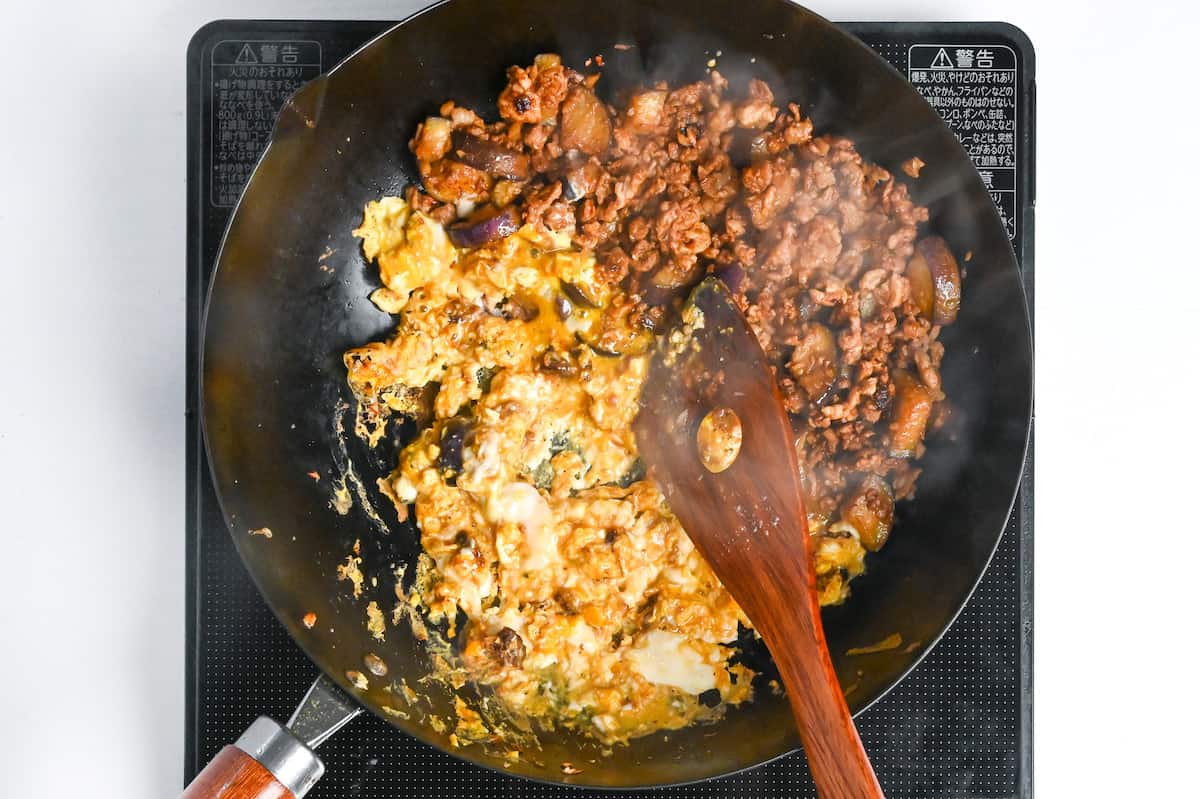
Let them firm up a bit before mixing to create a scrambled texture. If you do this too early, the egg pieces will be too small. Fry until the egg is half cooked to prevent it from becoming rubbery.
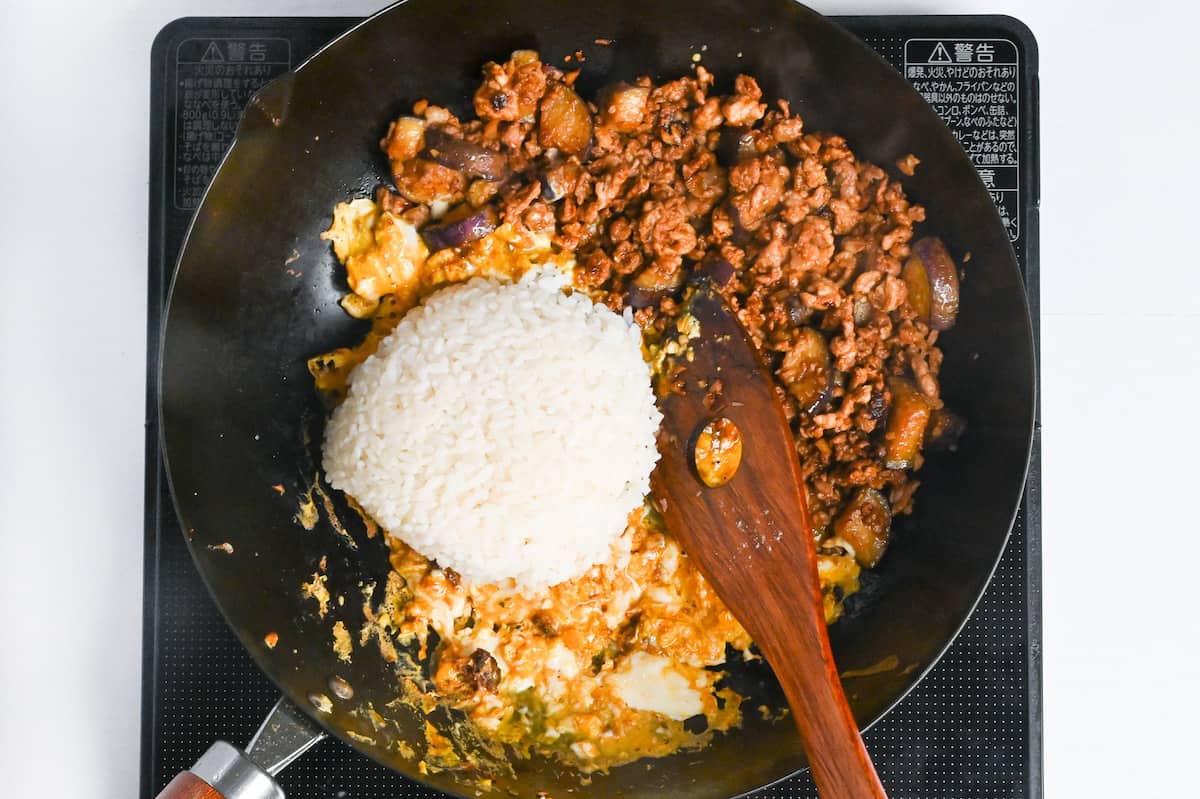
Add the cooked rice and stir fry until the rice is evenly distributed.
Tip: Use cooled rice to prevent it from becoming broken and mushy. The moisture from freshly cooked rice creates steam, whereas cooled rice is slightly dry and has a better texture when fried.
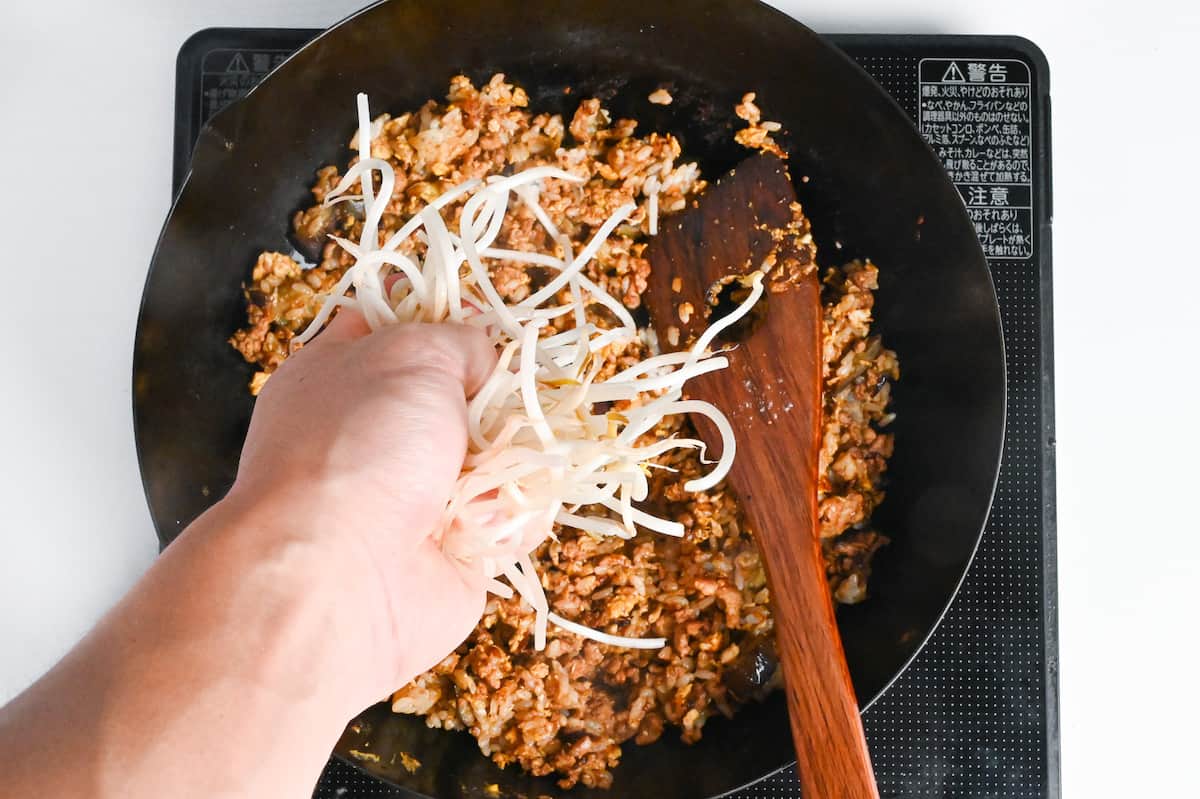
Crush the bean sprouts and add them to the pan. Stir fry for 1-2 minutes before removing the wok from the stove.
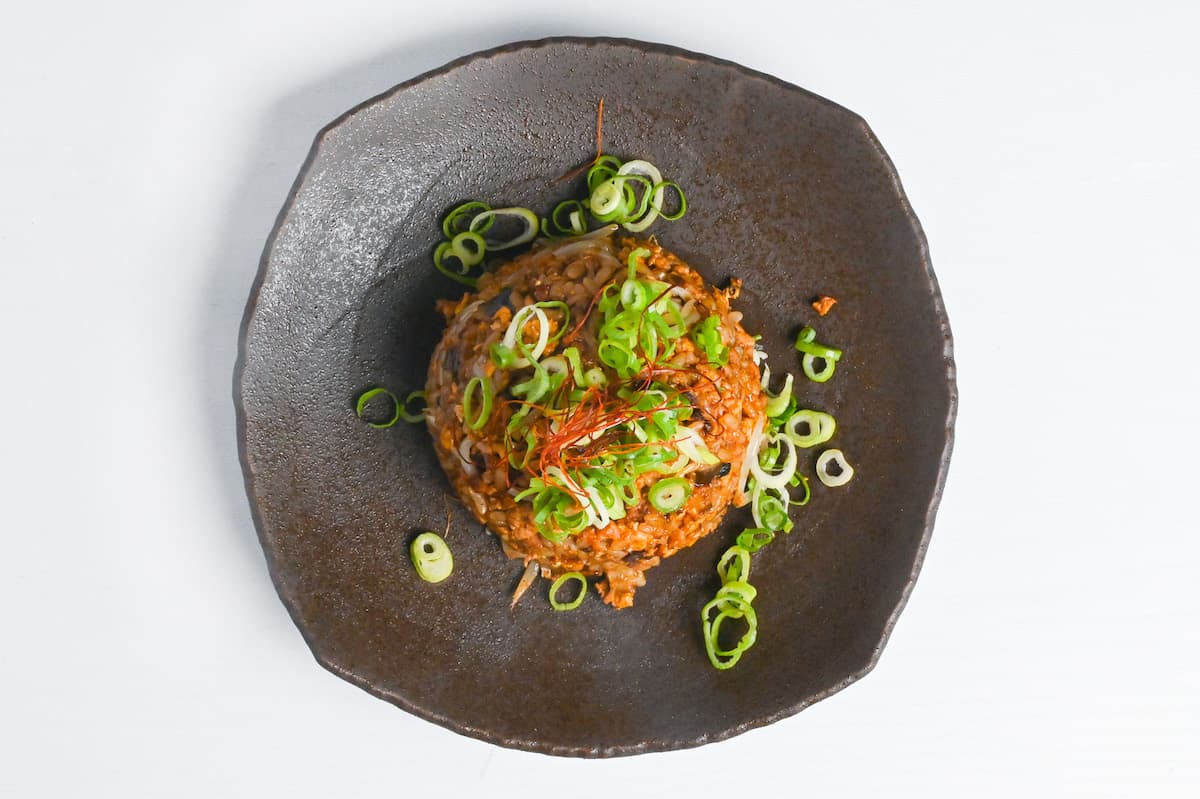
Plate up and garnish with chopped green onions, chili threads, and a drizzle of chili oil.
Enjoy!
Jump to Full Recipe Measurements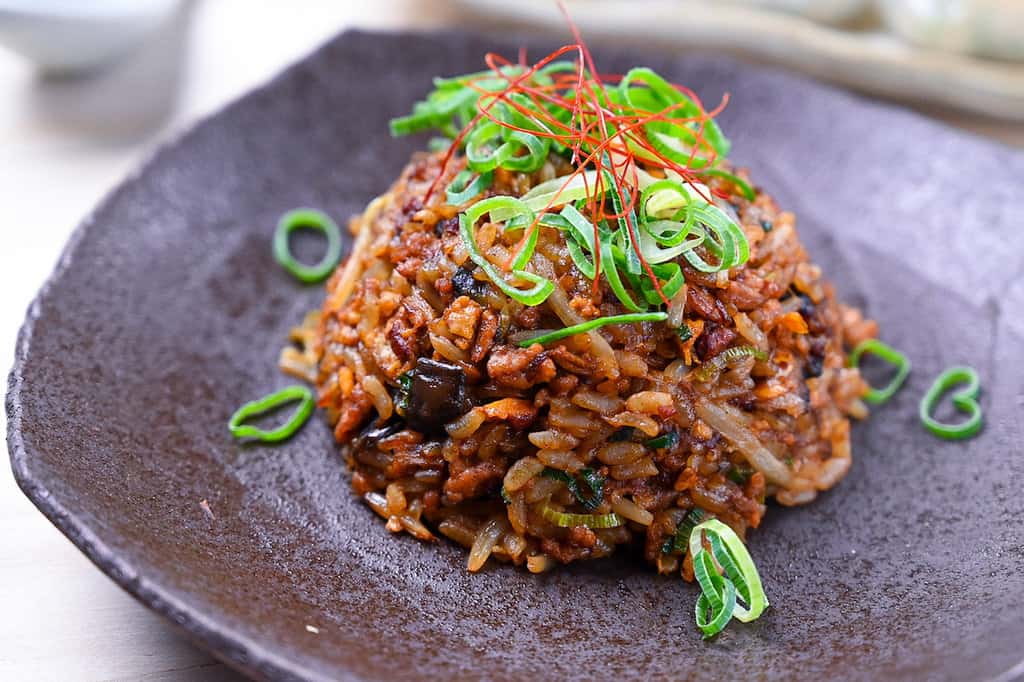
Tips & Tricks
- Cool the rice – This is essential for ensuring there isn’t too much moisture when adding it to the pan. Moisture makes the rice sticky, mushy, and soft, which is not a pleasant texture for fried rice. Many people recommend day-old rice, but as long as it is properly cooled and slightly dry, it doesn’t need to be a day old. If you’ve just cooked the rice, spread it out in a wide container and mix occasionally to cool it faster (make sure it’s covered so it doesn’t become too dry!).
- Don’t overcrowd the pan – Make sure to use a pan big enough for the number of portions you want to cook. Overcrowding the pan will cause uneven cooking and make it difficult to mix. I recommend cooking in batches if your pan is small.
- Preparation is key – If you measure out all of your ingredients and cut everything before you start to cook, the actual cooking process will be a breeze! This is also great for meal prep if you want to make it even quicker next time.
- Use plenty of oil – Since I use lard and pork, I find the wok stays evenly greased throughout the cooking process. However, if you use a different cooking fat or meat, you might find the wok drying as you cook. Be sure to add more oil if it starts to stick, especially before you add the eggs.
- Cooking the eggs – Push the other ingredients to one side of the pan and ensure the eggs make contact with the pan’s surface when adding them. Let them cook a little before mixing. This will ensure you have nice chunks of egg in your fried rice without it becoming lost. I also add the rice once they’re half-cooked to avoid overcooking them and making them rubbery.
- Don’t cook for too long – Take it off the heat once the rice is heated. Cooking for too long will result in dry fried rice.
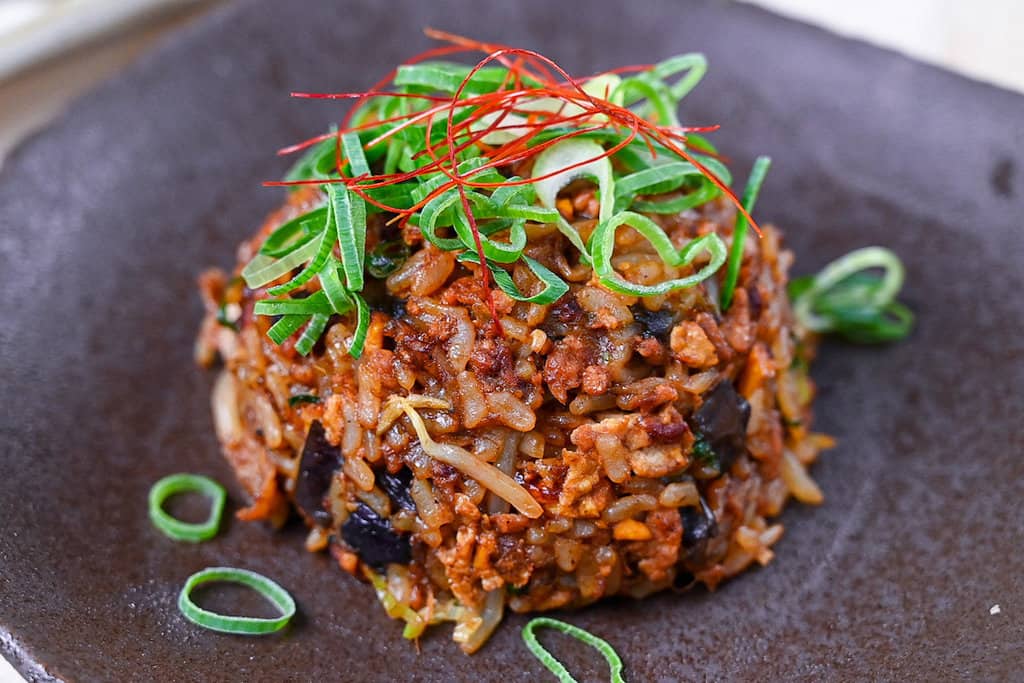
How to Store
To keep yakimeshi fresh and tasty, avoid leaving it at room temperature. Instead, refrigerate it for up to two days or freeze it for up to a month.
Before refrigerating, let the rice cool and store it in a sealed container. It’s best to reheat using a pan or wok.
If freezing, wrap each serving tightly to prevent air exposure. Use a microwave oven for thawing and reheating.
Storage summary
Room temperature – Not recommended.
Refrigerated -Up to 2 days.
Frozen – Up to a month.
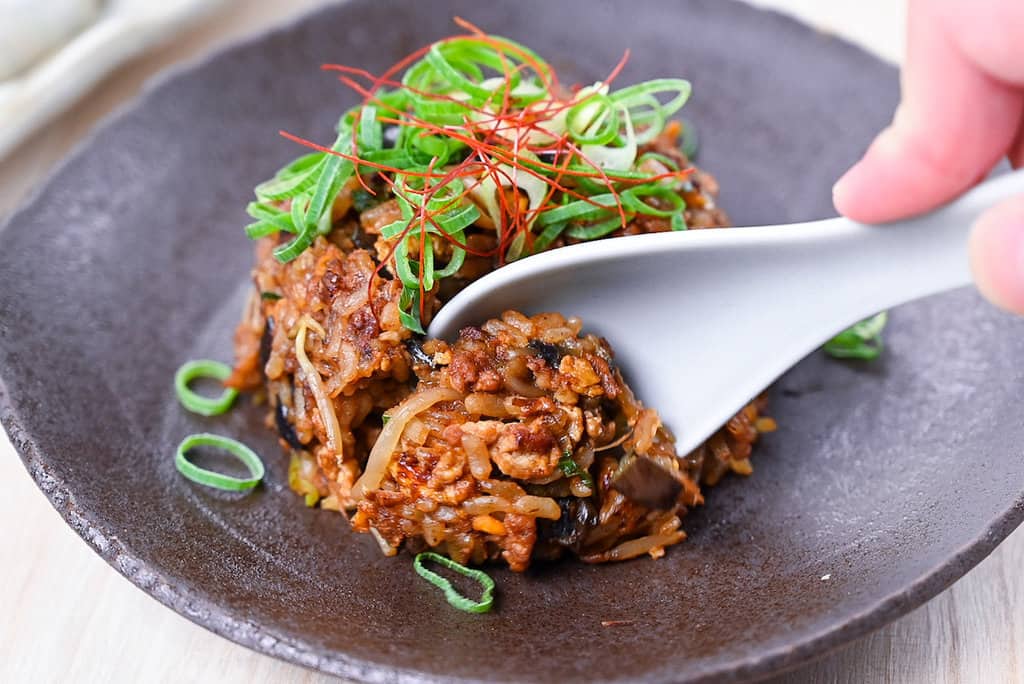
I hope you enjoy this Miso-flavored Yakimeshi recipe! If you try it out, I’d really appreciate it if you could spare a moment to let me know what you thought by giving a review and star rating in the comments below. It’s also helpful to share any adjustments you made to the recipe with our other readers. Thank you!
More Japanese Rice Recipes
- Chahan (Ramen Restaurant Style Fried Rice)
- Takikomi Gohan (Japanese Seasoned Rice)
- How to Cook Perfect Japanese Rice on the Stove
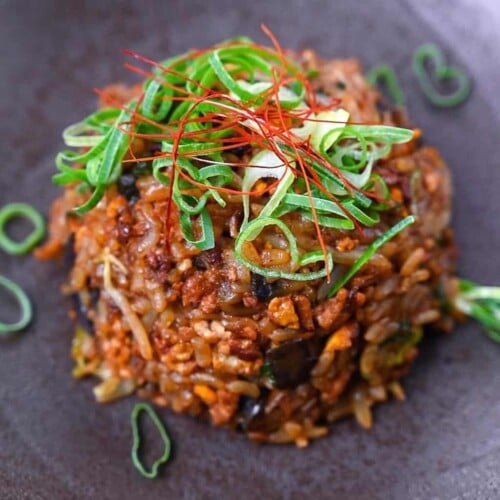
Yakimeshi (Japanese Fried Rice) with Pork and Miso
Ingredients
- 1 tsp lard
- 1 tbsp Japanese leeks (naganegi) white part, finely diced
- 1 tsp ginger root finely diced
- 2 garlic clove finely diced
- 100 g ground pork
- 50 g slab skinless pork belly finely diced
- 60 g eggplant cubed
- 1 pinch salt and pepper
- 1 tbsp red miso paste
- ½ tsp soy sauce
- ½ tsp oyster sauce
- 1 tsp Chinese-style chicken bouillon powder (granules)
- 2 egg
- 200 g cooked Japanese short-grain rice
- 100 g beansprouts
- finely chopped green onions garnish
- chili oil (rayu) optional
- chili threads optional
Instructions
- Heat a wok on medium-high and melt 1 tsp lard. Once melted, add 1 tbsp Japanese leeks (naganegi), 1 tsp ginger root and 2 garlic clove (finely diced). Stir fry until fragrant.

- Next, add 100 g ground pork, 50 g slab skinless pork belly and 60 g eggplant (cubed) with 1 pinch salt and pepper. Stir fry everything together until the meat is sealed.

- Add 1 tbsp red miso paste, ½ tsp soy sauce, ½ tsp oyster sauce and 1 tsp Chinese-style chicken bouillon powder (granules), mix until everything is well incorporated.

- Once mixed, push the contents of the wok to one side and crack 2 egg into the empty space.

- Scramble the egg and fry until half cooked.

- Add 200 g cooked Japanese short-grain rice and stir fry until all the ingredients are evenly distributed.

- Crush 100 g beansprouts in your hands and add them to the wok. Stir fry for 1-2 minutes.

- Remove the wok from heat and dish up. Top with finely chopped green onions, chili oil (rayu) and chili threads.

- Enjoy!



Leave a rating and a comment